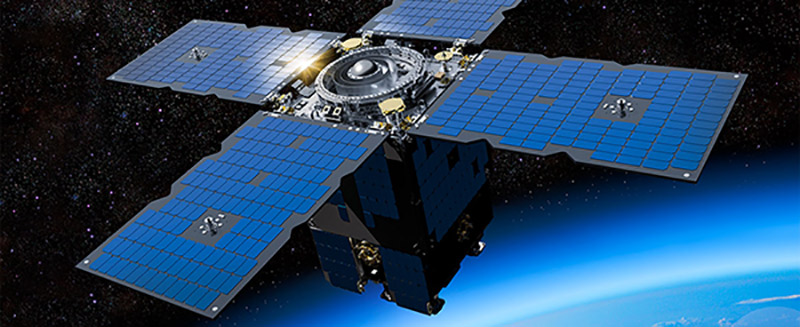General Atomics Orbital Test Bed Satellite Payload Commissioning Underway
General Atomics Electromagnetic Systems (GA-EMS) announced today that commissioning of NASA’s Deep Space Atomic Clock (DSAC), the primary hosted payload on-board the Orbital Test Bed (OTB) satellite, is now underway. GA-EMS’ OTB was successfully launched at 2:30 a.m. EDT on June 25, 2019 on board the SpaceX Falcon Heavy rocket.
“Our OTB spacecraft is operating nominally and we have successfully met the first milestone in DSAC commissioning which involves power up and establishing normal telemetry,” said Scott Forney, president of GA-EMS. “We are working closely with JPL to successfully bring DSAC to operational status, and will continue to provide operations support services as DSAC enters its year-long mission to demonstrate its capabilities to support deep space navigation.”
“Before DSAC began the commissioning process, OTB underwent its own critical checkout sequence, including establishing communications, “de-tumbling” and spacecraft stabilization, solar panel deployment, and entering a power and thermally safe mode,” said Nick Bucci, vice president of GA-EMS Missile Defense and Space Systems. “We are extremely proud of our team for successfully completing these critical milestones to begin the on-schedule commissioning process for DSAC. In addition, we are now powering up and establishing communication links with the other four customer-provided technology payloads on-board OTB, to begin their commissioning processes.”
DSAC is a miniaturized, ultra-precise, mercury-ion atomic clock intended to support deep space navigation and exploration. It was designed and built at NASA’s Jet Propulsion Laboratory for NASA Space Technology Mission Directorate’s Technology Demonstration Missions Program. In addition to DSAC, GA-EMS’ OTB spacecraft is hosting technology demonstration payloads including: a Modular Solar Array developed for the U.S. Air Force Research Laboratory (AFRL); an Integrated Miniaturized Electrostatic Analyzer sensor payload developed by cadets at the U.S. Air Force Academy; the RadMon next generation radiation effects monitor; and the FlexRX programmable satellite receiver. Also on board OTB as a passive payload are Celestis cremains for Earth orbit memorial spaceflight.
“Think of OTB as a configurable, versatile rideshare platform designed to increase the number of flight opportunities to space-qualify multiple demonstration payloads on a single satellite,” continued Bucci. “We work closely with our customers to design and build OTB satellites to meet multiple payload requirements to alleviate the costly burden of designing, building, and launching a dedicated platform for each payload. Customers can focus more on their mission objectives, and leave the design, manufacture, launch and mission operation services to us.”

